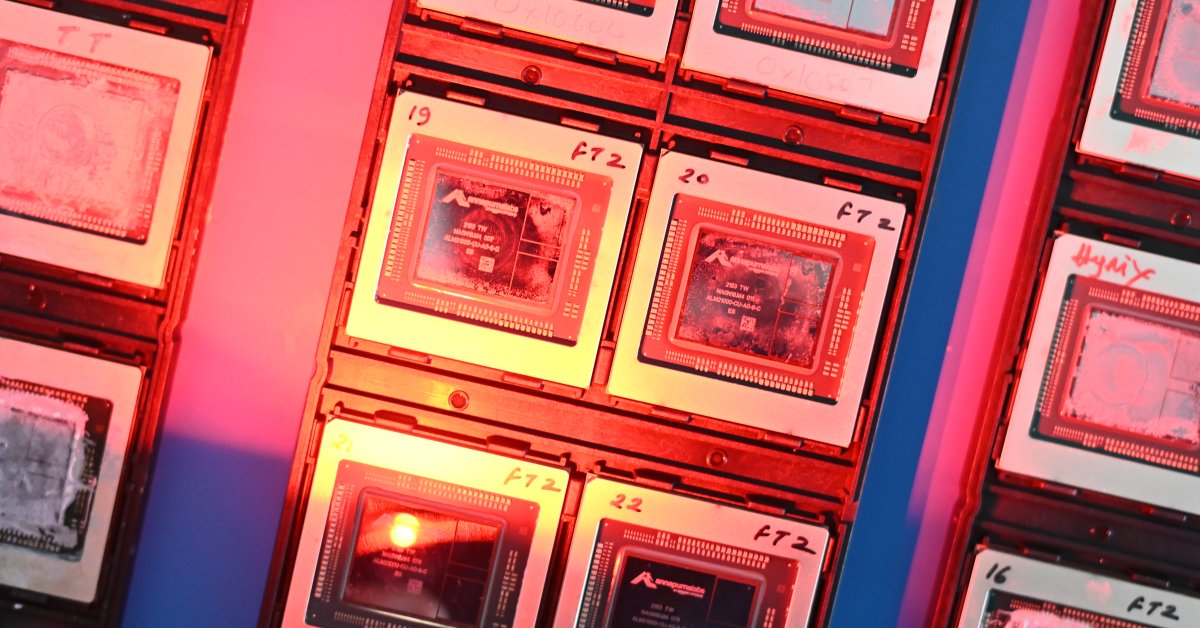Exploring Amazon’s Efforts to Outpace OpenAI’s ‘Stargate’ Initiative

Inside Amazon’s AI Chip Revolution
Meet Rami Sinno and Trainium 2
In a lab in Austin, Texas, Rami Sinno is busy handling a large silicon wafer that is key to the technology that powers artificial intelligence. The disc is about the size of a beach ball and contains numerous rectangular tiles, each packed with billions of tiny electrical switches. This sophisticated piece of technology, known as Trainium 2, is Amazon’s latest innovation in the realm of AI chips.
Sinno, who serves as the director of engineering at Annapurna Labs, Amazon’s chip design team, is part of a critical effort to advance technology that shapes how AI operates. Trainium 2 chips, announced in December, are considered some of the most advanced chips available today and represent a shift in how tech giants are approaching AI computing.
The AI Chip Race
For many years, Nvidia has had a monopoly on the design of high-performance chips for AI. However, as the demand for powerful AI models grows rapidly, tech companies like Amazon and Google have started developing their own chips. This decision is fueled by a burgeoning cloud computing market projected to hit $900 billion by 2025.
Amazon is not just participating in this trend; it’s making significant investments to secure a leading role. By designing its own chips, Amazon aims to gain an edge in the burgeoning AI landscape. Sinno’s team has developed chips that promise to revolutionize AI training and deployment.
Project Rainier: A Massive AI Compute Cluster
In the near future, Amazon plans to deploy thousands of refrigerator-sized supercomputers as part of a project called Rainier. This ambitious initiative will create one of the world’s largest AI compute clusters. Project Rainier will be situated in undisclosed locations across the United States and is a direct response to projects like Microsoft’s Stargate, which have garnered extensive media attention.
The scale of Project Rainier is unprecedented, as Amazon aims to build the most powerful AI infrastructure globally, potentially outpacing competitors like OpenAI and Google, who are also investing heavily in similar projects.
Key Partnerships and Collaborations
Amazon’s strategy includes a significant partnership with Anthropic, an AI company that will utilize the massive computing power of Rainier to train its AI models. Anthropic is partially owned by Amazon, having received an $8 billion investment for a minority stake. This relationship illustrates how Amazon plans to use Anthropic as a practical example of the benefits its cloud services can provide.
By investing heavily in Anthropic, Amazon ensures a steady revenue stream from AWS while concurrently demonstrating the capabilities of its infrastructure. The collaboration aims to enhance both parties’ technological advantages.
The Competitive Landscape
While Amazon is working diligently to develop its chips, it still depends on Nvidia for certain technologies. Other companies, like Google, offer competing chips that are considered by industry insiders to be superior. Even though Google has also invested in Anthropic, Amazon’s close relationship poses a unique advantage, allowing for tighter collaboration on chip development.
Sinno and his team received valuable feedback from Anthropic on optimizing the Trainium 2 chips based on their needs and usage patterns. This collaboration is not typical, but it’s vital for staying competitive in the rapidly evolving AI domain.
The Role of Advanced Chips
As Amazon continues to develop its proprietary chips, it aims to reduce its reliance on Nvidia, which has faced challenges meeting the soaring demand for its products. Unlike Nvidia, which sells physical chips directly to customers, Amazon focuses on providing access to its chips through AWS. This strategy gives Amazon the flexibility to optimize performance across multiple clients without the constraints that come with physical sales.
Sinno is particularly excited about future advancements, including the upcoming Trainium 3, expected to be more powerful and energy-efficient than its predecessor. The development process for these chips is being enhanced by AI technology itself, illustrating a self-reinforcing cycle where advancements in AI fuel further improvements in hardware.
A Look Ahead
The integration of advanced AI technology and custom chip design not only benefits Amazon but also sets a precedent for how technology can evolve. Through projects like Rainier and collaborations with companies like Anthropic, Amazon is positioning itself at the forefront of the AI revolution, aiming to reshape the landscape of artificial intelligence as we know it. With massive investments and innovative chip designs, the future of AI technology looks promising at Amazon.





